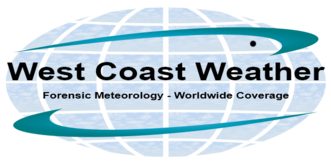BACKGROUND: SOLAR ELECTROMAGNETIC AND GEOMAGNETIC STORMS
Several curious about the nature of earthly weather have postulated a correlation between solar electromagnetic or earthly geomagnetic disturbances and tornadogenesis. Real answers are now tangible due to the blessing of several decades of highly accessible historical data. A thorough examination of the influences of solar and earthly electromagnetic changes on F4 and F5 tornadoes must analyze the timestamps of both anomalous data during them and of known solar electromagnetic storms.
SOLAR ELECTROMAGNETIC STORMS
History’s biggest and most impactful solar electromagnetic storms, such as The Electric Storm of 18821, have been products of the inner turmoil of the sun. That storm was able to melt contemporary infrastructure: some of Western Union’s telegraph lines. The most notable, the 1859 Carrington Event2 – the “white light flare” that made night seem like day – helped to inspire early solar research. Another Carrington Event in 2019 would threaten far more than telegraph lines, potentially damaging on the order of $0.6-2.63 trillion dollars. The most famous of more recent storms struck on Mar. 3, 1989 in Quebec4, majorly disrupting eastern Canada while
casting an aurora visible from Texas.
Other, less notable incidents, such as the August 20185 geomagnetic storm and the Jul. 14, 2000 Bastille Day event6 , have disrupted satellites and terrestrial communications, occasionally triggering fires. Seventeen major flares inflicting minor damages spanned from Oct. 19 to Nov. 5, 2003 and was particularly shocking on Halloween7.
Although heightened solar activity is responsible for the frequency and sizes of electromagnetic storms, it is much less important than the very slight chance a flare projecting a storm into a precise point in space will hit earth squarely. For instance, another potential Carrington Event narrowly missed8 Earth in 2014.

Semi-regular, small-to-moderate electromagnetic storms correlate with sunspot activity. Typically, they take one to five days to reach Earth and often last six to twelve hours, although some last for days9. When a solar wind, a.k.a. solar cloud, reaches Earth, it compresses the magnetosphere and adds to the existing current. The compression drives atmospheric particles poleward. Molecular collisions with the lower atmosphere are witnessable as the aurora borealis (north) and australis (south.)
CHANGES IN OBSERVED GEOMAGNETIC DATA OVER TIME
A second, more thorough approach toward observing a possible correlation between tornadoes and electromagnetic fluctuations is to meticulously study the available electromagnetic anomaly data, which is dominated by earthly physics when the sun isn’t storming over Earth.
Why are Earth’s geomagnetic physical properties constantly changing? The prevailing theory concludes they’re mainly driven by moving channels of subterranean, molten iron. Deep in the core, the slow but persistent displacement changes the complicated shapes of Earth’s electromagnetic fields.
One way this manifests to an observer on the surface is the translation of the magnetic poles. The North Pole has drifted closer to true north – under an ice cap floating in the middle10 of the Arctic Ocean – rather than northern Nunavut, CA, as taught to 20th Century schoolchildren. Sometimes it travels faster than others. It’s not a new phenomenon: 19th Century scientists11 also detected its migration.
In the mid-1990s, the North Pole abruptly began to move not nine miles per year but around thirty-four. By 2018, it skipped over the International Date Line, into the Eastern Hemisphere. Two primary patches of magnetic fields dominate the north: one near Siberia and one near Canada. Presently, the Canadian influence is being suppressed. Do these changes potentially relate to the production of F4 and F5 tornadoes?
